GIGABYTE GA-J1800N-D2H Review: Dual Core Bay Trail-D at $69
by Ian Cutress on December 26, 2014 11:00 AM EST- Posted in
- Motherboards
- Intel
- Bay Trail
Direct Comparison with HP Stream 11
The two main factors in our comparative tests will be the speed, whereby the Celeron J1800 has a higher base frequency, and my extension of this, the difference in TDP. The Bay Trail-M based Celeron N2840 has a 7.5W TDP (or as Intel puts it, 4.5W SDP) compared to the 10W of the J1800. On the graphics side of the equation, both units have the HD (Bay Trail) mode equipped (4 EUs), but the J1800 also has an advantage by a vastly superior base frequency on the integrated graphics (688 MHz against 313 MHz).
Cinebench 11.5
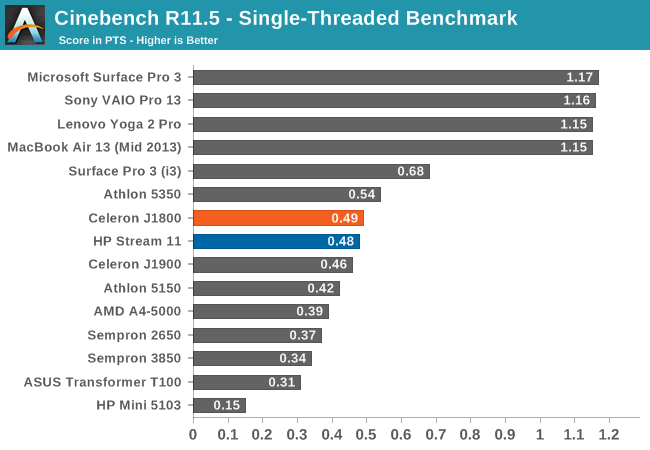
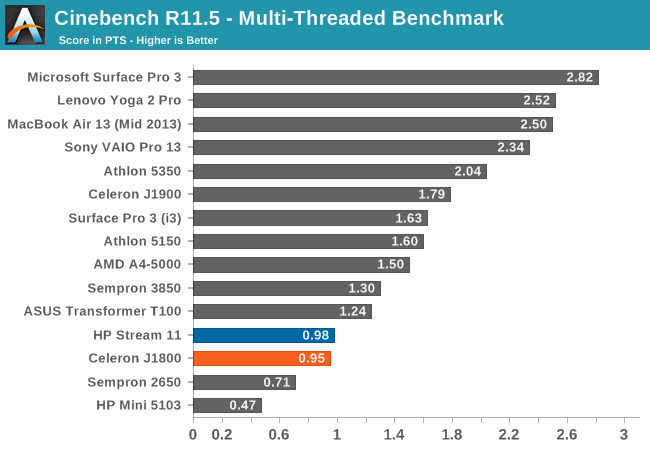
Each system trades places in Cinebench R11.5.
3DMark
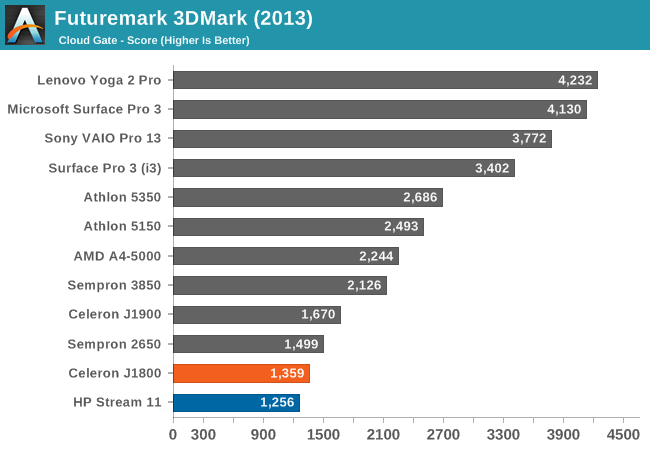
The extra MHz of the J1800 puts it slightly above the Stream 11 in a synthetic video test.
Web Benchmarks
On the lower end processors, general usability is a big factor of experience, especially as we move into the HTML5 era of web browsing. For our web benchmarks on the CPUs, we take well known tests with Chrome 35 whereas the laptop results are performed in IE.
Sunspider 1.0.2
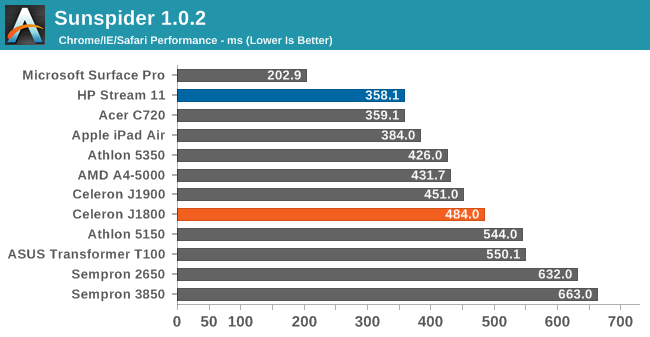
Sunspider represents a very quick CPU only test, boltered more by the software version or operating system at hand. It would seem the default settings with the HP Stream 11 make it beneficial here.
Mozilla Kraken 1.1
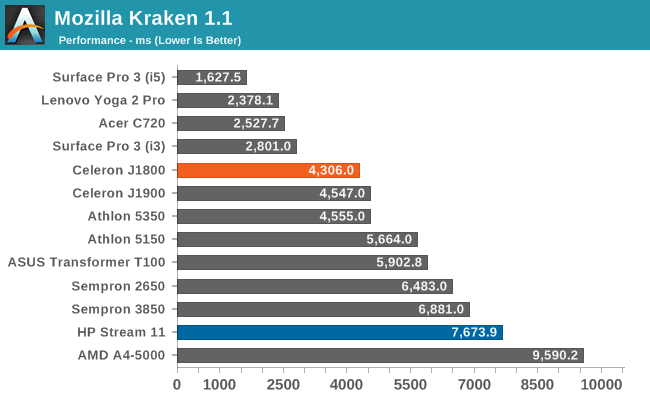
Kraken on the other hand is a bit more intense, with more memory access required. The extra memory in our desktop system most likely affected it here.
WebXPRT
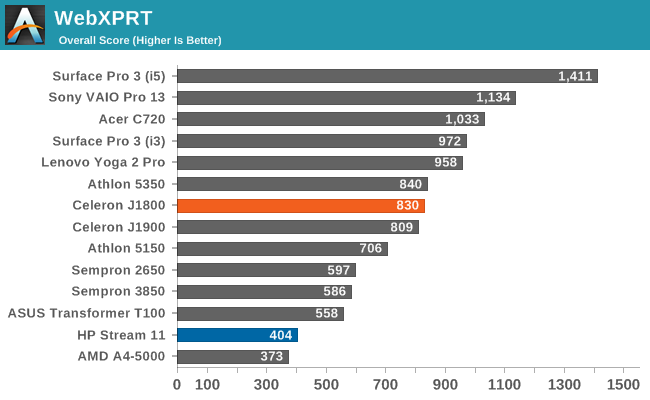
Similarly with WebXPRT, as a semi-graphical test as well, the plus side was on the Bay Trail-D desktop system.










38 Comments
View All Comments
jbltecnicspro - Saturday, December 27, 2014 - link
Good article, but I really would have appreciated if you could compare this CPU to a Celeron 1037u. I have a feeling that with its Ivy Bridge architecture though, that it would probably wipe the floor with this new CPU.bill.rookard - Saturday, December 27, 2014 - link
You'd be right on the dual core version. Compared against the little quad core version, the quad does significantly better. I have to say that I wouldn't consider the dual core for any purchase, but I do have the quad in my htpc. The quad has slower single thread performance, but the total score (geekbench) using all cores matches the 1037u.jbltecnicspro - Saturday, December 27, 2014 - link
Interesting. Thanks for sharing your experiences. I have to wonder though, when I see a 1037u + motherboard system for sale for like $4 extra dollars, what's Intel's point in releasing this? I suppose eventually when the supply for the 1037u dries up, all we'll have are these Atoms. Hurray - we're paying more for less. :)bill.rookard - Saturday, December 27, 2014 - link
Well, I do agree on some puzzlement as to what purpose the J1800 serves. The J1800 is a 10w part, the J1900 is a 10w part. Geekbench on the J1800 is about 1000 on the single core (matching the J1900) but only 1600 on the multicore score. That is pretty useless and would be somewhat painful to use in real life.And - considering that the J1900 scores much higher on the multi-core loads while operating in the same thermal envelope, they can't even say that it's really and issue of power usage in a mobile situation. So, I can see why they would release the J1900 quad, it turns in similar performance metrics as the 1037u while using half the power which is a worthwhile cause.
The J1800 seems to be a 'broken quad core' part that they're releasing to keep yields high as they sell them to suckers who don't realize how slow they are.
nginx - Friday, January 2, 2015 - link
There would have been a huge market for these if they had the intuition to slot in a couple of extra SATA ports. It would have made for a super cheap 4 bay NAS with extremely low power consumption. Would have easily been the next gen successor to the 1037u for the DIY NAS builders.In its current state, it might only appeal to the HTPC builders if it can do transconding on the fly. For those of us who don't need transcoding on the fly, the Raspberry Pi is the perfect solution.
A secondary market could be those looking for a PC just to surf the net and do light office work but with a score of 1000, even those tasks could be a handful for the J1800. I have a 7 year old Core2Duo laptop with 1083 score and it feels too sluggish for daily use even with an SSD.
flensr - Saturday, December 27, 2014 - link
the price link to the dell monitor goes to the amazon search for the viewsonic monitor.eanazag - Tuesday, January 13, 2015 - link
Okay, so are you using UEFI in Windows 7? This obviously affects POST time. Also Windows 8 POST times with UEFI would be the best case scenario in testing. If I care about POST times, I will be running Windows 8.I remember that there have been benches done with Anandtech on Windows 8. Why not across the board?